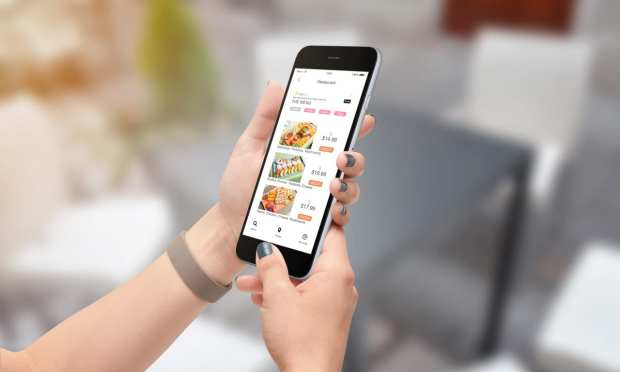Restaurants Race To Top Of Mobile Ordering Experience

In the early days of smartphones, consumers’ mobile ordering options were extremely limited, and they primarily consisted of ordering from restaurants’ desktop-designed sites through their mobile browsers. Now, consumers looking to order for delivery or pickup on the go from their mobile devices have a much wider range of options. These features are key to restaurants’ ability to survive as consumers, after more than a year of stay-at-home orders and contagion concerns, have come to expect safe and convenient digital options. In fact, PYMNTS research finds that 92 percent of top performing restaurants offer the ability to order using a mobile app, compared to only 31 percent of the lowest performing restaurants.
The apps of restaurant aggregators such as DoorDash, Uber Eats and Grubhub enable consumers to not only easily order from a wide range of restaurants but also to discover new options based on whatever cuisine they are in the mood for. Meanwhile, leading restaurant brands are offering their own apps that not only enable ordering but also reward regular usage with personalized deals and offers. For instance, El Pollo Loco, a Costa Mesa, California-based restaurant chain known for its LA Mexican-style fire-grilled chicken, uses “microsegmentation” to target consumers with offers based on previous orders, how often they visit, and how much they tend to spend, making its in-app experience one that is actually relevant to consumers.
In today’s connected economy, however, mobile ordering is not just limited to specific apps that consumers need to go out of their way to seek out. Contextual integrations such as voice ordering can be key to winning the loyalty of convenience-craving consumers. According to PYMNTS Digital Drive Report, 53.3 percent of commuters use voice assistants on their smartphones while they drive. Ordering food and finding restaurants are vital parts of these commuters’ routines, and 14 percent used voice assistants to order meals for delivery while they were driving.
Many major quick-service restaurant (QSR) chains already offer voice ordering through voice assistants such as Cortana, Alexa and Google Assistant. Similarly, Google is integrating restaurant ordering into consumers’ daily routines by enabling food orders through Google Maps. Leading brands understand that, as mobile ordering options become more widely available across the board, those that integrate the most seamlessly into consumers’ lives will have the competitive advantage.
In fact, Yum! Brands, parent company of Taco Bell, KFC and Pizza Hut, recently announced its acquisition of chat-based ordering and marketing platform company Tictuk. The company’s “conversational commerce” software enables consumers to engage with brands and to place orders through messaging platforms including SMS, WhatsApp, Facebook Messenger and Telegram. This sort of chat-based ordering has already been working well for pizza chain Jet’s Pizza, whose artificial intelligence (AI) text-to-order feature launched at the end of March.
“We get a lot of feedback that customers really love [the feature]. The most common thing we hear is how easy and fast it is,” the Jet’s Pizza Chief Information Officer Aaron Nilsson told PYMNTS in an interview. “It was the first ecommerce order my 9-year-old daughter ever placed, and it’s how my mom orders, because everyone is comfortable with text.”
Nilsson predicted that AI mobile ordering options including “voice, text, or anything predictive” will likely become common practice within the next several years. As increasingly user-friendly mobile ordering options roll out across the country and around the world, leading restaurant businesses will need to offer more than just the traditional in-app ordering experience to stand out. Personalized offers and contextual integrations may be the difference between playing catch-up and pulling ahead.
